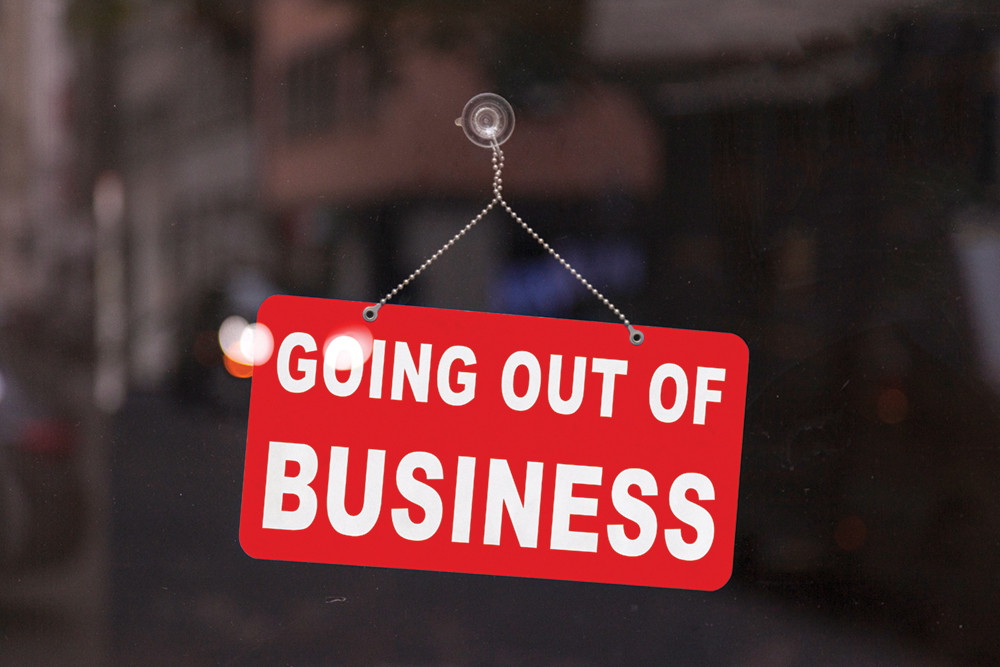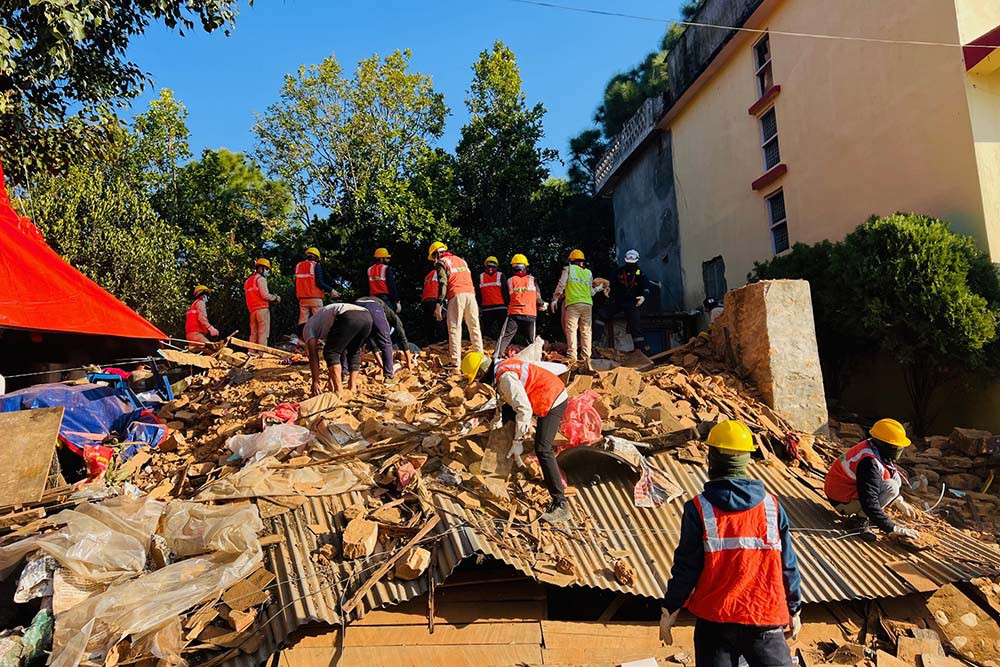
The road network of Kathmandu Valley is around 1800 kms where 700,000 vehicles run every day. In developing countries like Nepal, people strongly believe that the public transport is for poor. Such belief is one of the major causes for the exponential increment of private vehicle ownership in Kathmandu in recent years. The increase of motorised vehicles is around 20% annually.
Owning private vehicles is perceived as a status symbol in Nepal. International experiences have shown that such perception needs to be changed and will change given that safe, cheap reliable, secure and comfortable public transportation is operated
Dwellers of Kathmandu are facing mobility problems for years. Currently, traffic congestion and safety have become public concern. People suffer severely from traffic congestion and road accidents. Annually 2200 people lose their lives on roads. The situation is worsening by the day.
The government has put focus on widening of roads to solve traffic issues in the valley leaving the issue of sustainable public transportation development in the shadow. Examples of world class cities have demonstrated that traffic issues cannot be solved only through expanding road infrastructure. Nepal needs a strategy shift from road widening to implementation of proper public transportation. The best way to achieve sustainable transport management would be an integrated program of developing public transport systems and road widening simultaneously.
Land is a scarce resource and its use is limited. Therefore, road widening cannot be carried out again and again whenever a city experiences traffic congestion. The current widening of roads in the may ease traffic for some years, but the numbers are on the rise. Once demand exceeds the capacity of roads, the situation will recur.
There is no possibility to widen roads infinitively. Therefore, Nepal needs to learn from the experiences of other cities to promote public transportation systems immediately. Public transport has the capacity to solve the challenges of increasing mobility, improve quality of life, control road and traffic accidents. Nepal is in strong need of a public transport system that is safe, secure, reliable, integrated, smooth, comfortable, economical, efficient and affordable. Once the level of service of public transport reaches close to that of private vehicles, people will automatically make the shift.
The government has already implemented regulations to restrict private vehicle through high vehicle registration charges, environmental charges, fuel taxes and parking charges. This makes access to private vehicle ownership expensive and unaffordable to all.
Currently there is mix of traffic on the roads of Kathmandu with high capacity public buses (56 seater) to low capacity (12 seater) micro buses. The trunk routes are wider so high capacity buses should ply on these routes with low capacity ones on feeder routes. Currently, availability of public transport in day time is not a big issue but the concerns are of reliability, safety, security, connectivity and comfort. Social as well as economic activities will enhance only once a city has well developed transportation systems.
Transport operators need to be financially sustainable from the service fee. Therefore, they focus on revenue maximisation rather than service. Public transport is a business. This is a contradiction which needs to be balanced. In the current scenario, no operator will run an empty vehicle as a public service, they will accommodate as many passengers as they can, often running on erratic schedules. A 12 seater micro bus can be seen carrying 20 people or more and a bus keeps waiting till it gets sufficient passengers.
When government can spend millions of rupees to widen roads, it is well capable of investing in developing sustainable public transport systems. The sustainability will also depend largely on public and private partnership outcomes.
A bus service for the night was implemented in Kathmandu on a trial basis in 2069 BS. It was operated from 8pm to 11pm in Kathmandu valley and was inaugurated by then deputy prime minister at Shanti Vatika, Ratnapark. It was operated for six months on trial and subsidy of Kathmandu Metropolitan City and Ministry of Finance. Fourteen night buses were operated in five different routes in the inner city and one more route on the ring road. 26-seater capacity buses equipped with CCTV and two armed security personnel were assigned to 4 to 6 trips on respective routes per day. The fare maintained was same as that in day time.
KMC provided 2.5 million rupees and the Finance Ministry provided two million rupees for operation of the night bus service for the first six months as fuel cost and wages subsidy to private operators. It was agreed that private operators after six months would operate without subsidy but it couldn’t happen. Each bus collected on average Rs 500-700 on the first trip, but after that, there were minimal number of passengers. Economic sustainability of the night bus service was impossible which resulted in the shutdown of the service.
The government now has the opportunity to improve the transportation system as syndicate in the public transportation sector, prevalent for the last three decades has come to an end. The government needs to plan well on issues such as route permits, capacity of vehicles, departure timing, ticket pricing, integration of time table and ticketing system among others. It needs to ensure scientific and systematic public transport management. All transport operators must register themselves under the company act and come under a single umbrella.
Government involvement in transport operation authority is also required for smooth functioning of public transportation. This is a practice worldwide. In Munich Germany, Munich Transport Authority has been established through shareholding from state government, Munich City, eight administrative districts and 40 public transport companies. All the public transportation (metro rail, bus, tram) are operated through a coordinated system. Similarly, in Berlin, the Berlin Transport Company was established in 1992 with the municipality integrating public and private transport operators. In Delhi, the government owned Delhi Transportation Corporation runs public transportation.
The government needs to expedite the process of registration of current transport committees as companies and work alongside to setting up a transport authority and bring all operators under this authority. This authority must be granted the sole responsibility to plan and operate public transportation. Any investment in the public transport sector can be routed through this authority. This model should be replicated in all major cities of the country. This authority will be led by a Chief Executive Officer with required technical and administrative staffs. Investors will be the board of directors with CEO holding executive power.
To make this authority sustainable and profitable, the government should be ready to subsidise expenses. For instance, in Germany, Italy, Netherlands and Belgium, the government gives subsidy up to 40%, 60%, 60% and 67% respectively.
In recent years, some public transport operating companies like Sajha Yatayat, Mahanagar Yatayat and Mayur Yatayat have been providing comparatively improved urban transport services. Sajha Yatayat has been operating in the cooperative model with involvement of Kathmandu Metropolitan City as a major shareholder. The government now needs to implement 24 hour bus service programs in urban cities like Kathmandu, Pokhara, and Biratnagar.
The population of Kathmandu has already exceeded five million. To manage transportation system in Kathmandu, urban railways has become essential. Principally, a city with more than three million population requires urban railways to manage urban transportation issues. Investment Board Nepal (IBN), a government entity has also initiated developing a metrorail system from Dhulikhel to Nagdhunga. Currently IBN is in the process of selecting a consulting firm to conduct a detailed feasibility study. The Kathmandu Metropolitian City has also permitted a private Chinese company to conduct feasibility study of monorail system on the Ring Road. Considering the population size, Kathmandu Valley needs metrorail system not monorail system. Metrorail system has the capacity to move 85,000 passengers per hour per direction but monorail system only 30,000. Urban railway system will help reduce traffic congestion, emission and improve road safety. Since urban railway projects are in the study phase, it will take more than eight years to come into operations if at all. Therefore, there is no immediate alternative to developing a public bus system in the immediate conditions.
Bus Rapid Transit (BRT) could be operated immediately on the recently widened ring road and other trunk roads, high-capacity buses on trunk routes and smaller vehicles on narrower roads.Government must immediately initiate a public transport company for Kathmandu valley and initiate getting all the current public transport companies under this authority. All companies will be promoters of this authority based on shares that are calculated on the number of buses they own. The authority will have control on planning, staffing, routing, ticketing and scheduling, etc. The first phase must concentrate on institutionalisation of the authority and development of integrated ticketing system and schedules. The state must define standards of service that the authority must deliver.
By Ashish Gajurel, Transport and Traffic Engineer





